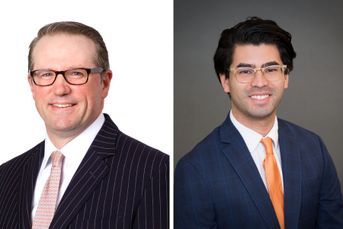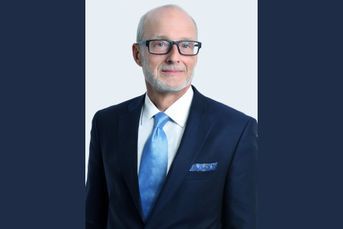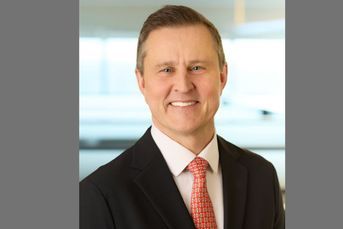Can your DC plan take a punch?

Record inflation and 401(k) statement shock could send some retirement plans down for the count.
If former heavyweight champ Mike Tyson is right (and who would be silly enough to challenge his wisdom?) then financial advisers managing defined-contribution plans these days better not have glass jaws because it’s getting rough out there.
The S&P 500 dropped 21% in the first six months of 2022, suffering its worst first half of a year since 1970. Meanwhile, the supposedly stable fixed-income portion of investors’ asset allocations didn’t fare much better. The iShares Core U.S. Aggregate Bond ETF (AGG) posted its worst start to a year in history, falling 11% through June. This nowhere-to-hide investing environment has ratcheted up the anxiety of American workers who now see preserving the status quo as their top financial priority in retirement, replacing more lavish spending plans.
“Everyone has a plan until they get punched in the face.”
Mike Tyson
According to a June study from Principal Financial Group of nearly 1,000 consumers and 215 plan sponsors in the U.S., more than seven out of 10 consumers (71%) said their key goal in retirement is “maintaining my standard of living,” while less than half (44%) cited splurging periodically in retirement as a priority.
“In the current environment of high inflation and potentially lower investment returns, we are seeing something of a retirement reset among U.S. workers,” said Sri Reddy, senior vice president at Principal Financial Group.
Meanwhile, as if their dashed retirement dreams of Alaskan cruises and convertible sports cars weren’t injurious enough, workers are feeling the insult of higher prices eating away at their daily purchasing power. The consumer price index increased 9.1% in June from the same month a year ago, marking the highest reading since November 1981.
Combine the one-two punch of 401(k) statement shock and record inflation and one can easily imagine the hits financial advisers must be taking from frenzied plan participants eager to chew their ears off (figuratively, of course, with all due respect to Iron Mike).
Nevertheless, to borrow an old boxing aphorism, “It ain’t about how hard you can hit. It’s about how hard you can get hit and keep moving forward.”
That’s the mindset of the top financial advisers, who not only pick up the phone when those difficult calls come in but make them in advance, beating their clients to the punch. They also schedule face-to-face meetings, vigorously search for the lowest fees and pore over participant plans to make certain they are in total ERISA compliance according to their duties as a fiduciary.
The anticipated payoff for advisers who refine these and other best practices during the tough times is that they strengthen relationships with their client base, putting them in a prime position to expand their businesses when the financial tides finally turn.
PROTECT YOUR CLIENTS
When an employer sets up a 401(k) plan for its employees, it selects an individual or group of individuals, known as fiduciaries, to oversee its administration. In terms of applying best practices for maintaining and managing those DC plans, the financial professional, and all plan fiduciaries, should ensure their actions align with ERISA’s definition that “a fiduciary is to discharge their duties regarding a plan solely in the interest of the participants and beneficiaries.”
“This should act as their so-called ‘North Star,’ guiding them in all their decision-making,” said Rick Fuerman, head of defined contribution marketing at Hartford Funds.
Following that symbolic North Star starts with financial advisers ensuring the fees their plan participants pay for investments and administration are not only reasonable, but appropriate.
“The lowest-cost option does not always mean the best option,” said Mona Gooden, retirement plan adviser at Moneta Group. “But a plan sponsor and adviser must be able to explain why they went with a higher-priced offering.”
Good governance practices for DC plan sponsors and their advisers are to benchmark investment management and record-keeping fees every three to five years. They should also conduct benchmarking surveys with their existing managers to determine if their plan participants are in the right share class based on the most recent asset levels in each fund.
“Clients won’t know how much you do for them unless you demonstrate your consultative value. Reviewing plan successes and challenges together with a plan health report that measures utilization and engagement with the plan are opportunities to consider any new plan features, enhancements, or investment options that might add value to the plan offering and deepen the relationship moving forward,” said Kevin Cox, president of Ascensus Retirement Services.
Fiduciary best practices also include an annual review of the company’s investment policy statement, ongoing documentation of the rationale for fiduciary decisions and the constant monitoring of plan investments and features.
“The changing of the guard we’ve experienced in the financial markets this year means that investment strategies which worked well in the past will likely not work as well in the future.”
Holly Verdeyen, U.S. defined contribution leader, Mercer
“Investment decisions for DC plan committees are becoming more multifaceted and require specialized attention, especially in areas of rapid product evolution, such as lifetime income and inflation-sensitive investment options,” said Holly Verdeyen, U.S. defined contribution leader at Mercer, a consulting firm. “The changing of the guard we’ve experienced in the financial markets this year means that investment strategies which worked well in the past will likely not work as well in the future.”
Or, to paraphrase a boxing referee’s pre-fight instructions, financial advisers overseeing DC plans should protect their clients at all times. And even more so during volatile times like these.
KNOCK OUT ‘TIME POVERTY’
The desire to offer a best-in-class DC program is often at odds with the capacity and bandwidth of a plan sponsor to do so. When it comes to benefits and benefit plans, a lot of the work generally falls into the laps of an overwhelmed and understaffed human resources department suffering an acute case of so-called “time poverty.”
According to the 2022 Mercer Global Talent Trends report, one in four HR leaders say they have limited internal resources to support ongoing DC plan management this year because their teams are “exhausted, suffering from high turnover, and being pulled in too many directions.”
That lack of capacity at the HR level is causing defined-contribution plan sponsors to delegate more fiduciary and investment decisions to their advisers. This is especially true today when the so-called “Great Resignation” has employees at all levels changing jobs or leaving the workforce altogether.
“With the battle for talent, HR teams need to be focused on going-forward workforce planning and total rewards packages, not on how to invest the retirement plan,” Verdeyen said. “Many DC plan sponsors want to partner with an organization that has the vast resources and expertise to support the wide-ranging needs they have in sponsoring a DC program under one roof.”
For sponsors, benefits are not only a way to attract talent, but a method for convincing employees to stay put.
In Schwab’s 2021 nationwide survey of 401(k) plan participants, 86% said a 401(k) is a “must-have” when looking for a new job, a number that’s similar to previous years’ results: In 2020, it was 85%, and in 2019 it was 87% of plan participants.
“The consistency tells us this need is not going anywhere,” said Nathan Voris, a director at Charles Schwab Corp.’s retirement plan services.
In terms of best practices, financial advisers need to fully understand their clients’ philosophies when it comes to benefits, in addition to where a company places benefits in its overall business outlook. This can be accomplished by posing some simple questions early in the relationship, such as:
- Is the client trying to use their offer to differentiate and attract key talent?
- Are they more interested in offering something minimally competitive, or at the lowest possible cost?
- How competitive is their labor pool in terms of skill sets and geography?
- What are the total expenditures budgeted against each component of the overall benefits offer?
- Has the company done any demographic analysis that would help predict employee needs and how they may impact productivity?
“By gathering this information at the beginning of a relationship and revising it periodically, it allows an adviser to offer their support in a way that considers the business needs and priorities, rather than operating in a silo with very little business context,” said Mike Shamburger, head of small market sales for retirement plan services at T. Rowe Price.
And looking forward, as it becomes increasingly clear that retirement redefining legislation such as Secure Act 2.0 will be passed into law, plan advisers should reach out to business owners to get a fuller sense of their future benefits needs.
“We’re seeing an increase in excitement toward student loan management as Secure Act 2.0 imagines bringing this benefit closer to the 401(k), allowing employers to match loans and 401(k)s while their employees pay down debt,” said Kristen Carlisle, general manager at Betterment at Work. “These are powerful tools and differentiators in the space gaining traction at companies of all sizes.”
IT PAYS TO SHOW UP
Put simply, financial advisers are hired to manage DC plans because of their expertise. Business owners and their employees are busy day-to-day juggling their jobs, families and civic duties. They are not necessarily experts in finance, nor do they have the time to monitor and adjust their accounts regularly, which is precisely why they outsource oversight and management to a trusted financial professional.
“It’s not enough to manage these accounts when it’s mutually convenient,” said Dave Goldman, chief business officer at Pontera. “It’s critical that as markets change, and clients’ goals and circumstances shift, advisers can take action when needed to deliver the best possible outcomes for their clients.”
And it pays to speak to those clients in person whenever possible.
Despite all the Zoom calls and virtual seminars during Covid-19, 60% of plan participants want human interaction when making decisions about their retirement investments, according to an MFS Investment Management study.
“Those regular check-ins onsite with participants and the key executives puts the advisers in front of dozens or more of a company’s employees, many of which are looking for more personal finance needs beyond their workplace retirement plan,” said Sean Kenney, managing director and head of defined contribution at MFS Investment Management.
Speaking of personal finance needs, most 401(k) plans offer some type of personalized advice that can help investors look at their whole financial picture, which includes understanding how to work through difficult financial situations.
As the economy starts to slow down and the job market starts changing, it’s a good time for advisers to remind their clients and plan participants of any low or no-cost advice offered through their workplace.
“Whether the economy has a hard or soft landing, participants are bound to benefit from workplace resources that can help them make good financial decisions,” said Schwab’s Voris.
Aside from personalization, financial wellness has emerged as the other leading trend when it comes to DC plans. And both are being powered by advances in data that enable users to make better decisions.
“Plan sponsors are leveraging technology and data more than ever before to drive personalization for participants and enable outcome-driven decisions. An outcome-driven approach requires participant data upfront to inform data-driven decisions that are tailored to the specific needs of the participant population,” said Mercer’s Verdeyen.
As for financial wellness, retirement plan provider T. Rowe Price said 83% of the advisers it calls clients offer a fully bundled, proprietary financial wellness offering. Most of these packages not only offer tools and education to help people lead healthier financial lives, but very often offer specific solutions to aid with items like college savings, college debt payments and emergency savings, as well as health care savings.
“We believe that prioritizing financial wellness is a key best practice. You can’t sell a DC plan without having a broader view of how you’ll make people financially well,” said Michael Doshier, senior retirement strategist at T. Rowe Price.
RUN (THE PLAN), DON’T HIDE
Ask any financial adviser and they’ll tell you that running defined-contribution plans helps build recurring revenue for their practice. It’s essentially a way to annuitize their businesses by creating a source of new employees, assets to grow the plan and new opportunities for individual wealth clients.
Kevin Devine, vice president for Nationwide Retirement Solutions, highlights the old axiom that for every dollar you earn on the 401(k) plan, you earn seven dollars on the additional financial services you can provide the participants on other financial planning solutions.
“By owning the 401(k) plan, you can help build a relationship with your high-net-worth clients that are also business owners — creating a stickier relationship that is harder to move to other financial advisers,” said Devine.
A strong bond through a DC plan also sets up a financial adviser to manage a participant’s money after they leave the firm. According to MFS, 70% of employees, on average, roll their money out of their 401(k) plan within three years of retirement.
Advisers serving these people for years through their workplace retirement plans are in the catbird seat to be the consolidator of those retirement assets.
“The greatest confluence of wealth in the U.S. today are the assets that employees hold through their workplace,” said Dan Steele, head of DCIO at Columbia Threadneedle Investments. “One of the quickest ways to build a successful wealth management practice is to tap into these assets. Developing a DC practice brings you closer to the $8 trillion of assets that reside there.”
It also brings financial advisers into contact with individuals who otherwise might not have been obvious prospects, such as members of so-called Gen Z, now a growing percentage of the workforce and one that’s increasingly interested in another big industry trend known as environmental, social and governance investing.
In Schwab’s nationwide survey of 401(k) plan participants last year, more than 40% of Gen Z and millennial participants said they would like more ESG or socially responsible investment options in their workplace retirement plans.
“We looked at our own 401(k) business over an eight-year period from 2013 through 2021 and found that ESG investments offered in the core menu stayed flat, with a bit under 10% of plans offering ESG choices to participants,” Schwab’s Voris said. “This trend, or lack thereof, sounds like proof ESG is ‘hype,’ but advisers can help sponsors take the long view. Since many employers aspire to retain employees for years, they need to understand that younger employees do care about values-based investing.”
FIND THE RIGHT RECORD KEEPER
If maintaining access to participants is an adviser’s goal, then picking record keepers with the right visibility, ownership and data is undeniably a best practice. Similarly, if an adviser would rather not deeply manage individual client relationships, then the prescient move is to find a record keeper that specializes in servicing participants.
“When it comes to managing record keepers, it’s vital to understand the role the record keeper plays in the participant relationship versus you as a financial adviser,” Nationwide’s Devine said.
Moneta’s Gooden, for example, maintains working relationships with several different record keepers, knowing that a single firm wouldn’t be an ideal fit for all her company’s clients. As a result, Moneta does business with firms including Fidelity, Empower and John Hancock, so as to maximize their respective strengths and weaknesses.
“Some clients may want a record keeper with an amazing website and others may want a record keeper that has a dedicated day-to-day contact that can assist their HR/payroll team. They may have a complicated plan design or have a TPA that they really like and want to continue that relationship,” Gooden said, adding that she references industry surveys to keep tabs on the players.
T. Rowe Price’s Shamburger echoes Gooden’s sentiment, saying that record keepers too often can seem like a commodity to sponsors that aren’t aware of the nuanced differences.
This makes the adviser very important in terms of shining a light on differences that could be meaningful considerations to the sponsor.
“Work with record keepers that offer helpful tools, customizable resources, practice management, and personalized communications and insights to help them gain trust and expand their expertise by working smarter not harder,” said Chris Magno, senior vice president at ADP Retirement Services.
Tips on mentoring programs from Envestnet’s Jean Heath
Learn more about reprints and licensing for this article.








